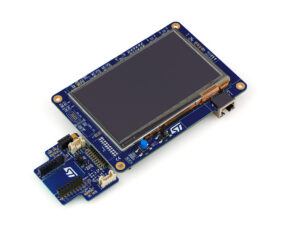
The STM32 Summit is back, and the 2021 edition will offer hundreds of demos, involve 35 partners, provide 55 technical sub-tracks and workshops and, for the first time, host a 24-hour hackathon challenge. The global pandemic prevented ST from holding the STM32 Summit in 2020, so the 2021 edition is a celebration of our ability to meet again. However, many still can’t fly internationally. As a result, we made the event more accessible and tailored to our worldwide audience by multiplying live streams and on-demand videos. Ultimately, as we settled on the theme “Driving a Smarter & Innovative World”, we aimed to show what makes our industry unique and what makes its people resilient and ingenious. The summit will take place in Shenzhen, China, from April 28 to 29.
The Summit revolves around four key applications: Industry & Security, Artificial Intelligence & Sensing, Cloud & Connectivity, and Ecosystem & Innovation. Each category will have specific presentations, hands-on sessions, demos, and more. For instance, we will showcase IoT solutions from ZiFiSense, which uses the STM32WL in a LoRaWAN router. Similarly, we will demonstrate graphical user interface solutions for high-power systems and smartwatches. Indeed, the scope of the STM32 Summit 2021 is quite large to ensure that attendees can either drill down a particular domain and leave with substantial expertise or sample multiple applications to obtain a broader experience. To better prepare for such a comprehensive event, The ST Blog decided to focus on two key highlights: the Hackathon Challenge and several differentiated showstoppers.
STM32 Summit 2021: 24-Hour Hackathon
The Challenge

The 24-Hour Hackathon challenge attracted over 50 teams. ST winnowed that list to 20 and then to 10 teams that will compete onsite. The contest will center around projects that demonstrate the participants’ use of ST products. There are nine categories of tasks that teams must complete ranging from GPIO configurations to artificial intelligence, information security, TouchGFX, and more. Participants have 24 hours, from April 28 noon, to document their progress and create their applications. Scoring weightage comprises 20% from online voting, another 20% from onsite attendees, and 60% from our panel of seven judges made of ST and external experts. Onsite judging criteria includes completion of projects, overall complexity, ST tools’ usage, practicality, creativity, and originality. We will live stream the entire Hackathon with additional presence on ST WeChat alliance accounts, the ST MCU China page, and our media partners’ websites.

The Arena
To help teams prepare, ST sent them five development boards one month before the Hackathon challenge. We’re providing the STM32H745I-DISCO, the NUCLEO-WL55JC, the P-NUCLEO-WB55, the SensorTile.box, and an NB-IoT Sensor Shield. Additionally, ST gave participants documentation and our engineers stayed available to answer their questions. We also hope to make this a teachable moment with eclectic interventions throughout the live stream. Indeed, besides showing the participants in action, the live stream will host technical marketing teams, field application engineers, and more. It will enable contestants to get immediate feedback to comfort them in their decisions or help them correct things rapidly. Additionally, viewers will better understand the technology and how it can solve their engineering challenges.
STM32 Summit 2021: Showstoppers
For a Greener Earth
Out of all the demos that we will show during the two-day event, we wanted to highlight some of the more unique ones. They may not necessarily be the largest, but they address new industry trends. For instance, Seeed, a Chinese company, will showcase a smart agriculture application. By using ST’s LoRaWAN module, the system can transmit information on a soil’s humidity and health. As a result, it’s possible to run a more efficient farming operation by only tending to grounds that need it. Similarly, Sungrow, another local partner, will showcase their photovoltaic inverters. Their products are already in 150 countries and contribute to the democratization of solar energy, showing the positive environmental impacts that power devices can have on society.
For a Smarter World
ST will also be showcasing a smart soccer ball that tracks the number of kicks it receives. Attendees will even try it out for themselves and see a mobile application update in real-time. The ball will hang from the ceiling, and ST will place sensors along the rope. When users kick the ball, the inertial MEMS record the motion, and the STM32WB MCU sends a signal to the phone using its Bluetooth radio. The application serves as a proof-of-concept. Over time, engineers can work on a similar system to help players correct their posture or increase their accuracy. Hence, the demo will show that it is increasingly common to use sensors in sports. Engineers are no longer asking if they can add an embedded system to help professional athletes, but how many.
Click Link- https://blog.st.com/stm32-summit-2021/






